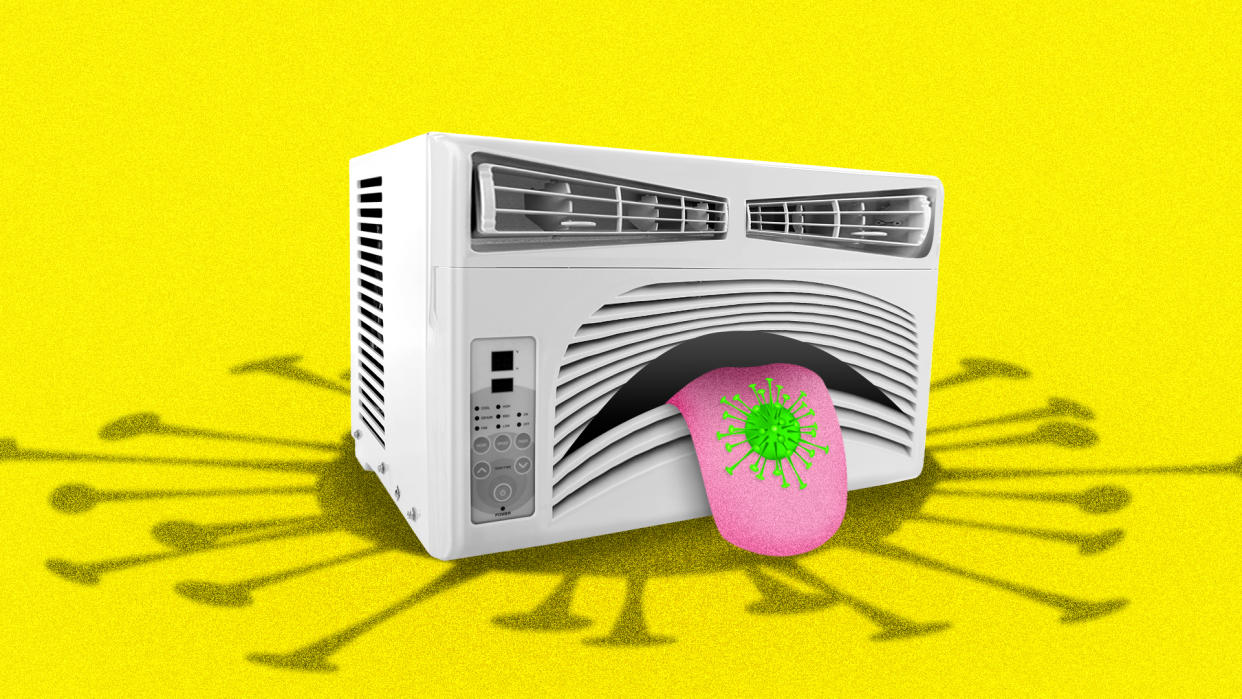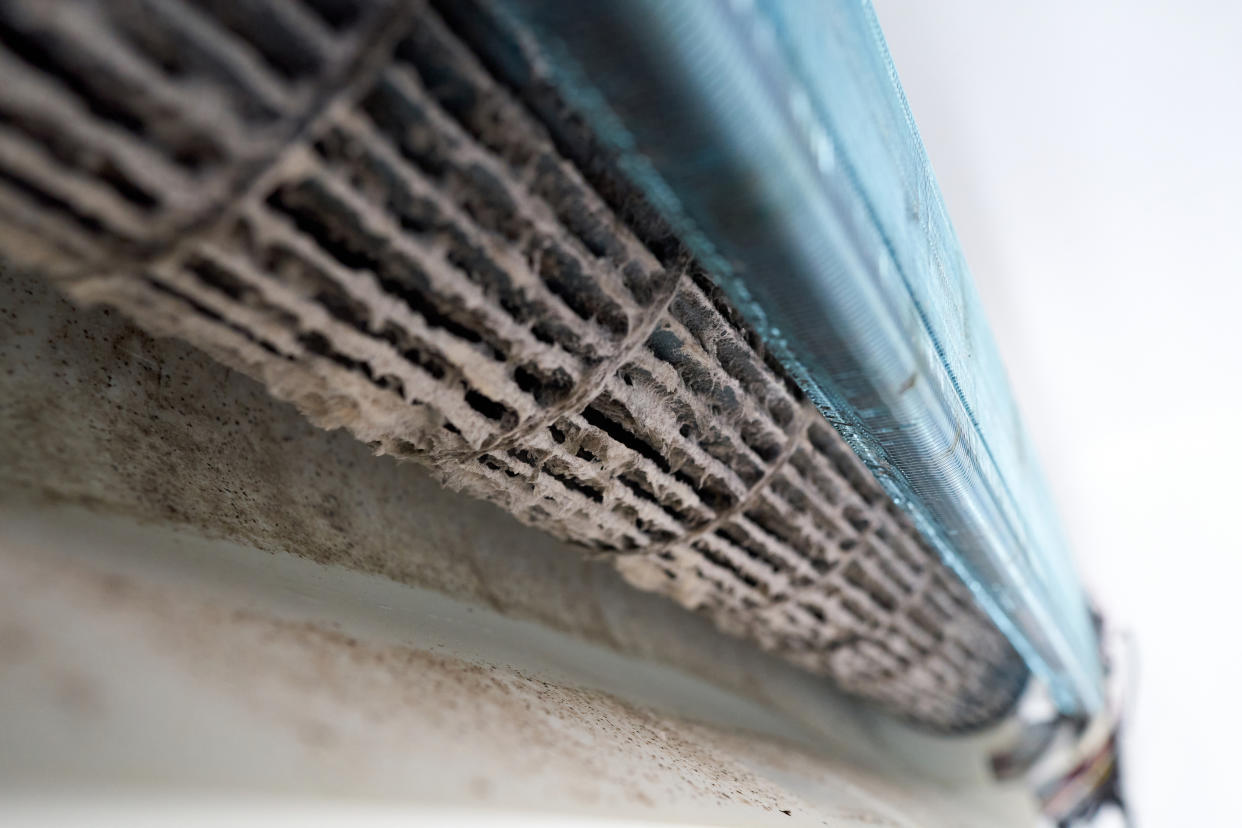Is your air conditioner making you sick? Experts unpack 'air con flu.'

Have you been feeling a bit under the weather while trying to escape the extreme heat? Some might say your air conditioner is to blame.
In recent weeks, TikTok has been buzzing with users sharing their experiences with so-called air con flu, an umbrella term used to describe an array of flu-like symptoms — sneezing, headaches, dizziness, fatigue, odor sensitivity, dry throat and more — they believe are related to long-term air conditioner use.
Terms like “air con cough,” as well as those named for cities where vacationers have felt ill after experiencing hotel AC (such as “Napa cough”), have also been used to describe the condition.
Those users’ concerns aren’t without merit, says the Environmental Protection Agency.
“Several studies have found an increase of occupants in buildings with air-conditioning systems reporting a set of non-specific, often described as cold-like, symptoms when compared to occupants in buildings with natural ventilation systems,” the EPA tells Yahoo Life in an email statement. “In some cases, this phenomenon has been labeled in some media reports as ‘AC-related illnesses’ or ‘air con flu.’”
But while the EPA insists a “well-maintained and properly used air conditioning unit itself is not generally the direct cause of symptoms,” some can’t help but raise concerns about symptoms. Here’s what you need to know.
Can air-conditioned rooms make us sick?
Potentially, yes. As a spokesperson for the California Department of Public Health (CDPH) tells Yahoo Life, AC units are designed to filter air pollutants and contaminants — dust mites, pollen, mold spores that thrive in humidity, smoke particles, bacteria and viruses — from entering the air we breathe inside. However, that shield of protection is compromised if a unit’s filter or duct hasn’t been replaced or cleaned per the manufacturer’s recommendations.
“This may lead some occupants, especially if sensitive to molds, to have breathing problems,” says the CDPH representative. It may also trigger symptoms related to preexisting asthma, allergies and other respiratory issues.
In less serious cases, dry throat and congestion aren’t uncommon for people sleeping close to an AC unit. Those symptoms tend to go away after a few days.
“Poorly maintained or improperly used air conditioning systems have been associated with reports of mucous membrane irritation, breathing difficulties, irritated skin, dry cough, dizziness, nausea, trouble concentrating, fatigue and odor sensitivity,” the EPA explains.
Mold spores are the most common culprit in chronic AC-related illnesses
Mold spores are microscopic and naturally present in the air, both indoors and outdoors. They enter through open doors, windows and vents and can be carried on clothing, shoes or pets.
When spores land on damp surfaces in your home, they can grow and form new mold colonies. The cool air from AC units helps balance a room’s humidity to prevent mold growth from happening. Sometimes, mold can be kept dormant for years until wet, damp conditions allow it to begin to grow again.
As the EPA explains, mold can also grow inside the unit itself if an owner isn’t checking it regularly. That’s because while most units are designed to drain the condensation itself, older ones can malfunction and require the owner to do it manually. If filters aren’t cleaned or replaced regularly, they can get clogged with dust and debris, trapping even more moisture inside the unit. This creates a damp environment ideal for mold to grow.
An outbreak of mold can cause allergic reactions and expose people to various toxic substances called mycotoxins that can prompt sneezing, nasal congestion, itchy or watery eyes or red skin.

What about airborne illnesses?
In rare cases, as noted by TikTok creator Dr. Nathan Spence in a viral video last year, AC units can expose people to bacteria that may cause Legionnaires’ disease, a type of pneumonia that’s spread through inhaling contaminated water droplets and requires antibiotics. The EPA confirms that Legionnaires’ disease has “been associated with buildings with poorly maintained air conditioning or heating systems.” However, most cases occur at hotels, care facilities and hospitals, per the American Lung Association.
“The elderly, infants and those with chronic illnesses can be more susceptible to these problems,” Spence tells Yahoo Life. “Regular maintenance of the air-conditioning units and keeping indoor temperature and humidity at comfortable levels can help mitigate these risks.”
However, the CDPH says it’s not clear that AC window units transmit airborne illness “beyond any transmission that might happen inside the room anyway,” adding: “It seems possible only with the most highly transmissible agents, like measles,” for example.
That’s not to say airborne viruses and bacteria — such as those that cause tuberculosis, the common cold, the flu and certain fungal infections — can’t pass through an AC unit in theory. But health agencies explain that their primary modes of transmission are close person-to-person contact.
How to avoid air con flu
The “key to controlling the potential for air-conditioning associated health impacts,” notes the EPA, is to invest in high-efficiency particulate air (HEPA) filters that help trap dangerous viruses and bacteria.
Maintaining your unit, especially when you’re blasting it for hours a day during the summer months, is also important. The EPA suggests the following:
Have your air-conditioning system serviced according to the manufacturer’s instructions. Some types of filters, for example, are designed to be disposable, while others are designed to be reused. Be sure to follow the instructions for your specific filter type.
Make sure air filters are clean, maintained and changed regularly. Typically it’s every one to three months. But if you’re running the AC continuously, you might need to change filters more frequently. The same goes if you’re in an environment prone to higher dust levels or pollution, if you or a family member suffers from allergies regularly or if you have pets.
Check and remove objects and/or dust that block air vents to ensure the unit functions properly.
Look for any buildup or condensation in the unit itself, as that can facilitate the growth of mold and other potentially harmful microorganisms.
Along with switching to high-efficiency air conditioners, you can try using ventilation and shading strategies, such as drapes or shades, to help better control indoor temperatures.
